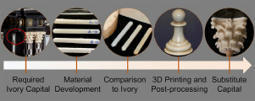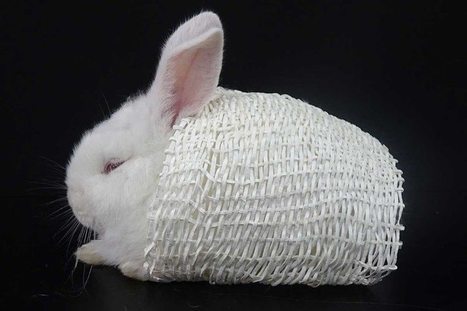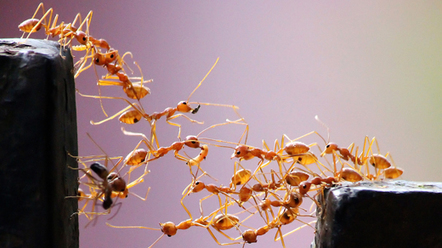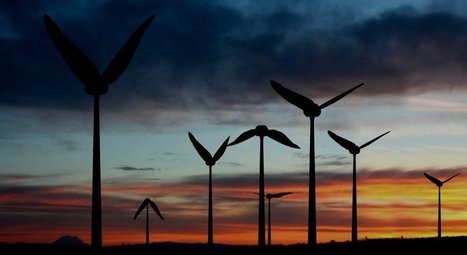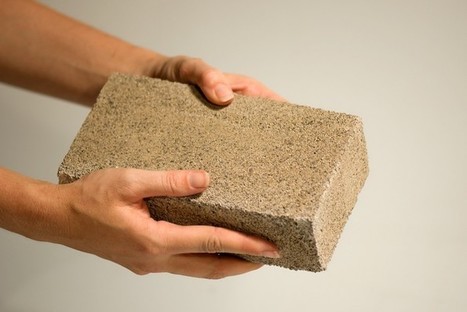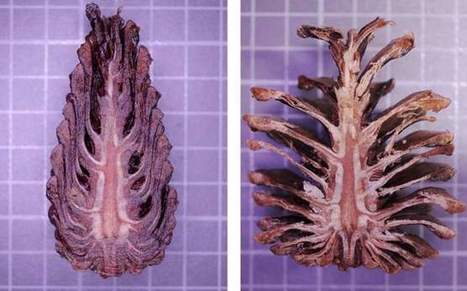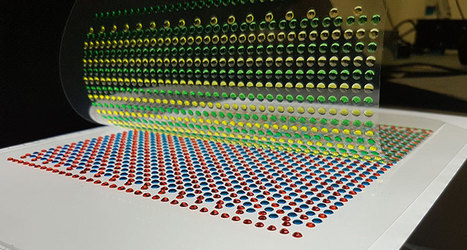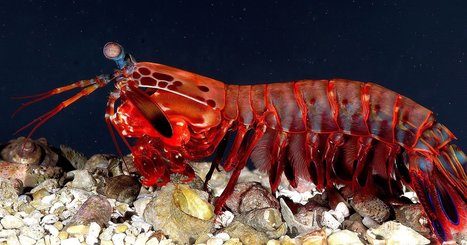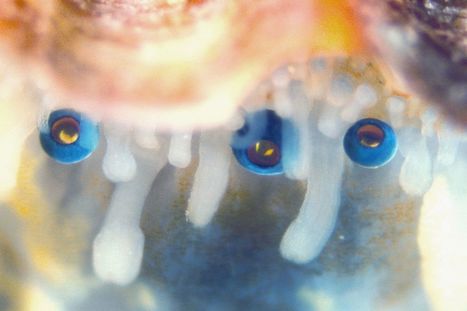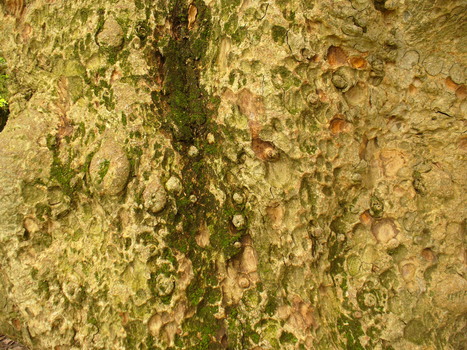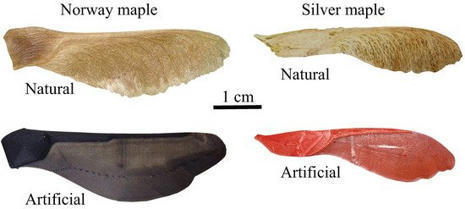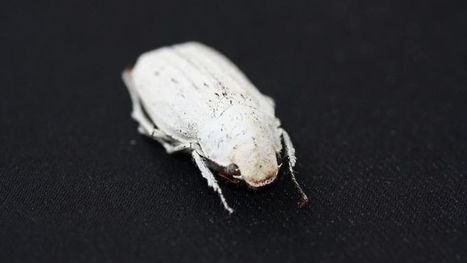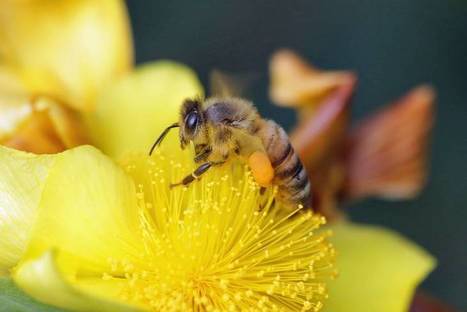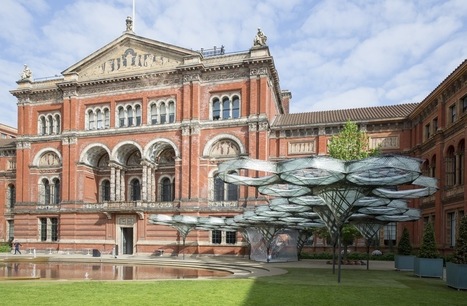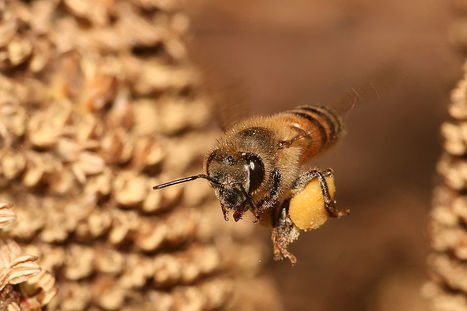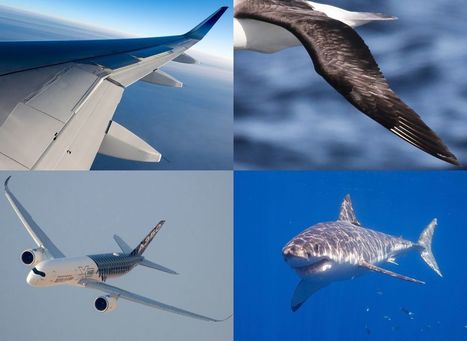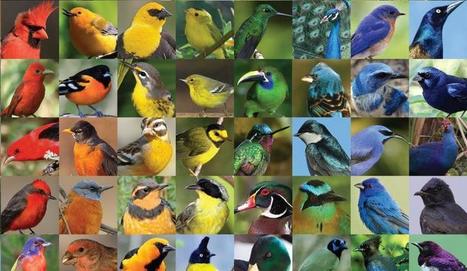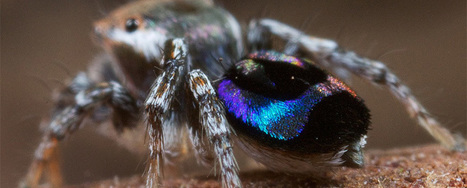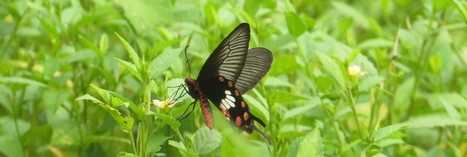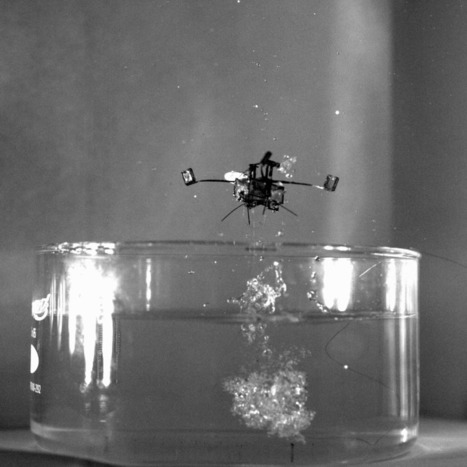"Scientists have unpicked how the skin of the Texas horned lizard funnels water towards its mouth - and copied the principles in a plastic version. This reptile can collect water from anywhere, including the sand it walks on; the fluid then travels to its mouth through channels between its scales. A German-Austrian team quantified the skin's key features, notably the way its grooves narrow towards the snout. The bio-inspired plastic copy could have some engineering applications. Writing in the Journal of the Royal Society Interface, the researchers suggest that the "passive, directional liquid transport" they have described might find a home in distilleries, heat exchangers, or small medical devices where condensation is a problem."
Get Started for FREE
Sign up with Facebook Sign up with X
I don't have a Facebook or a X account

| Tags |
|---|
 Your new post is loading... Your new post is loading...
 Your new post is loading... Your new post is loading...
The University of Nottingham is investigating how sea mussels stick to wet and wave-hit rocks using collagen-rich sticky threads, ending in adhesive pads, known as plaques. The findings could help to solve the man-made challenge of how best to anchor the floating foundations of an off-shore wind farm to the sea bed.
"Through history, numerous art, religious and every-day objects were carved from ivory because of its aesthetic appearance, convenient workability and its durability. Since the ivory trading ban was passed in 1989, many natural and synthetic materials were introduced as a replacement, but these are typically only available in bulk. …The newly developed substitute material called "Digory" is processible with an additive manufacturing technique that derived from stereolithography."
The thick pelt that helps polar bears to survive frigid Arctic winters has inspired a warm, sturdy fiber. Inspired by the microstructure and thermal insulation function of the polar bear hair, a research team led by Professor BAI Hao with ZJU’s College of Chemical and Biological Engineering has used a freeze-spinning technique to continuously fabricate silk fibroin solution into a fiber with aligned porous microstructure.
"Army ants form colonies of millions yet have no permanent home. They march through the jungle each night in search of new foraging ground. Along the way they perform logistical feats that would make a four-star general proud, including building bridges with their own bodies. Much like the swarms of cheap, dumb robots that I explored in my recent article, army ants manage this coordination with no leader and with minimal cognitive resources."
"A North African company has developed what it contends is a paradigm-shifting wind turbine technology based on the flapping of hummingbird wings. Any potential paradigm shifts are down the road a bit, but based on some remarkable images and new demo videos, the clean energy machine may be the prettiest wind turbine ever invented. Developed by Tyer Wind, a startup based in Tunisia, the turbine uses biomimicry principles to replicate the mechanical action of hummingbird wings. The design is fundamentally different from standard rotor-based wind turbines because instead of converting linear motion - wind blowing across the land - into a circular motion, it converts it into a figure-eight pattern. Not only is that shape the same as the one hummingbird wings make while the birds hover, but it also generates energy on both the upstroke and the downstroke.
"To build more aerodynamic machines, researchers are drawing inspiration from an unlikely source: the ocean. A team of evolutionary biologists and engineers at Harvard University, in collaboration with colleagues from the University of South Carolina, have shed light on a decades-old mystery about sharkskin and, in the process, demonstrated a new, bioinspired structure that could improve the aerodynamic performance of planes, wind turbines, drones and cars."
"[...] bioMason grows bricks and masonry without using any heat.
Cones produced by such trees as pines, spruce, hemlock, and fir respond naturally to different degrees of humidity by opening and closing, without consuming any electrical energy in doing so. Designing window blinds based on their mechanical properties that could open and close in response to moisture — but use no energy in the process — could conserve a lot of energy.
"The sea urchin spines are mostly made of calcite, usually a very brittle and fragile material. In the case of the sea urchin, however, the spines are much more durable than the raw material alone. The reason for its strength is the way that nature optimises materials using a brick wall-style architecture. A research team headed by Prof. Helmut Colfen, successfully synthesised cement at the nano-level according to this "brick and mortar principle". During this process, macro-molecules were identified that take on the function of mortar, affixing the crystalline blocks to each other on the nano-scale, with the blocks assembling themselves in an ordered manner. The aim is to make cement more durable."
"New power sources bear a shocking resemblance to the electricity-making organs inside electric eels. These artificial electric eel organs are made up of water-based polymer mixes called hydrogels. Such soft, flexible battery-like devices, described online October 13 in Nature, could power soft robots or next-gen wearable and implantable tech."
"Researchers from the University of Illinois have managed to create a new camera called the Mantis Cam that can see polarized light. This technology provides possible solutions for everything from unlocking the mysteries of the underwater world to early cancer detection. The research was published in the journal Optica and takes its inspiration from the mantis shrimp, a crustacean with an incredible visual system. Humans have 3 different types of color receptors, but the mantis shrimp has 16 different receptors alongside another 6 polarization channels. Animals in the underwater world use polarized light for “covert communication channels” as well as hunting and navigation."
Scallops, hardly the most complex of creatures, have intricate eyes that work like telescopes, say researchers. They hope this discovery can one day help us make our own telescopes more powerful.
"A novel optics system that mimics the structure of a lobster’s eyes would enable a conceptual Explorer-class mission to precisely locate, characterize, and alert other observatories to the source of gravitational waves, which are caused by some of the most powerful events in the universe. [...] the WFI, is equipped with the novel lobster-eye optics, which mimic the structure of the crustacean’s eyes. Lobster eyes are made up of long, narrow cells that each reflect a tiny amount of light from a given direction. This allows the light from a wide viewing area to be focused into a single image." |
"The overheating of buildings and their need for mechanical cooling is a growing issue as a result of climate change. The main aim of this paper is to examine the impact of surface texture on heat loss capabilities of concrete panels through evaporative cooling. [...] A systematic process was been undertaken to examine the impact of different variables on the cooling ability...[...] This study demonstrates the potential exploitation of morphological adaptation to buildings, that could contribute to them cooling passively and reduce the need for expensive and energy consuming mechanical systems."
"Maple trees (genus Acer) accomplish the task of distributing objects to a wide area by producing seeds, known as samaras, which are carried by the wind as they autorotate and slowly descend to the ground. With the goal of supporting engineering applications, such as gathering environmental data over a broad area, we developed 3D-printed artificial samaras. [...] This study demonstrated a bioinspired design for the dispersed deployment of sensors and provides a better understanding of wind-dispersal of both natural and artificial samaras."
"The wing of an earwig is a lot like origami—but its elaborate design is far more ingenious than anything humans can make. Researchers have been studying the secret of these wings and have created an artificial structure that functions on the same principle.
"Scientists have engineered perhaps the whitest natural substance, using the same physics behind one ghostly white Southeast Asian beetle. White and black feel like opposites for a reason. Black-colored things absorb nearly all of the light that strikes their surface, while white things send the light back, scattered equally at all wavelengths. A team of European scientists have essentially created the whitest paper using this physical property."
Computer engineers study the mathematics of how to optimize complex systems. In one example, they face a logistics challenge known as the "travelling salesman problem:" how can a hypothetical salesperson visit every city on their route in the shortest distance? The algorithms developed to answer these sorts of questions are useful in many situations, such as reducing the costs of and pollution from a fleet of delivery trucks. But when engineers tried to optimize traffic on the internet, they found their methods wanting. [...] Honeybees don't study mathematics, but the demands of evolution reward those colonies that succeed in optimizing their resources. Fortunately, in the strange tale of how honeybees make the internet work, the scientists were smart enough to see that the honeybees knew better than they did.
Architects and designers are increasingly using the principles of biomimicry in their work. Check out the fantastic examples in this collection of scoops (click on photo).
Miguel Prazeres's insight:
Share your insight
Photo details: Apis mellifera by Muhammad Mahdi Karim (www.micro2macro.net) Facebook Youtube), GFDL 1.2, via Wikimedia Commons
Miguel Prazeres's insight:
Bees' behaviour, organizational habilities and anatomy have been scrutinized intensely by scientists looking for new ideas and solutions to current problems. Check out the fantastic examples in this collection of scoops (click on photo).
The growing science of biomimicry focuses on what humanity can learn from the world, and Airbus engineers are learning quite a lot about efficient solutions for aircraft design that nature has spent millions of years refining.
Birds display a rainbow palette of colors, many of which come from special arrangements of melanin, the pigment that gives color to our skin. Researchers at the University of Akron have developed a safe and stable pigment based on the melanin structures.
The rainbow peacock spider (Maratus robinsoni) showcases an intense rainbow iridescent signal in males’ courtship displays to females. The intense rainbow iridescence emerges from specialized abdominal scales on the spiders. These scales combine an airfoil-like microscopic 3D contour with nanoscale diffraction grating structures on the surface that enables separation and isolation of light into its component wavelengths. Inspiration from these super iridescent spider scales can be used to overcome current limitations in spectral manipulation, and to reduce the size of optical spectrometers for applications where fine-scale spectral resolution is required in a very small package, notably instruments on space missions, or wearable chemical detection systems.
Researchers recently took cues from butterflies to design thin film solar cells that can better absorb light. The rose butterfly, common to India, has soft black wings that keep the insect warm with the sun’s heat. Mimicking the design of the butterfly’s wings, the scientists created a solar cell that The Verge reports can gather light twice as efficiently.
From
qz
"What’s better than a robot inspired by bees? A robot inspired by bees that can swim.Researchers led by a team at Harvard University have developed a tiny, 175-milligram (about two feathers) device with insect-inspired wings that can both flap and rotate, allowing it to either fly above the ground or swim in shallow waters and easily transition between the two." |









